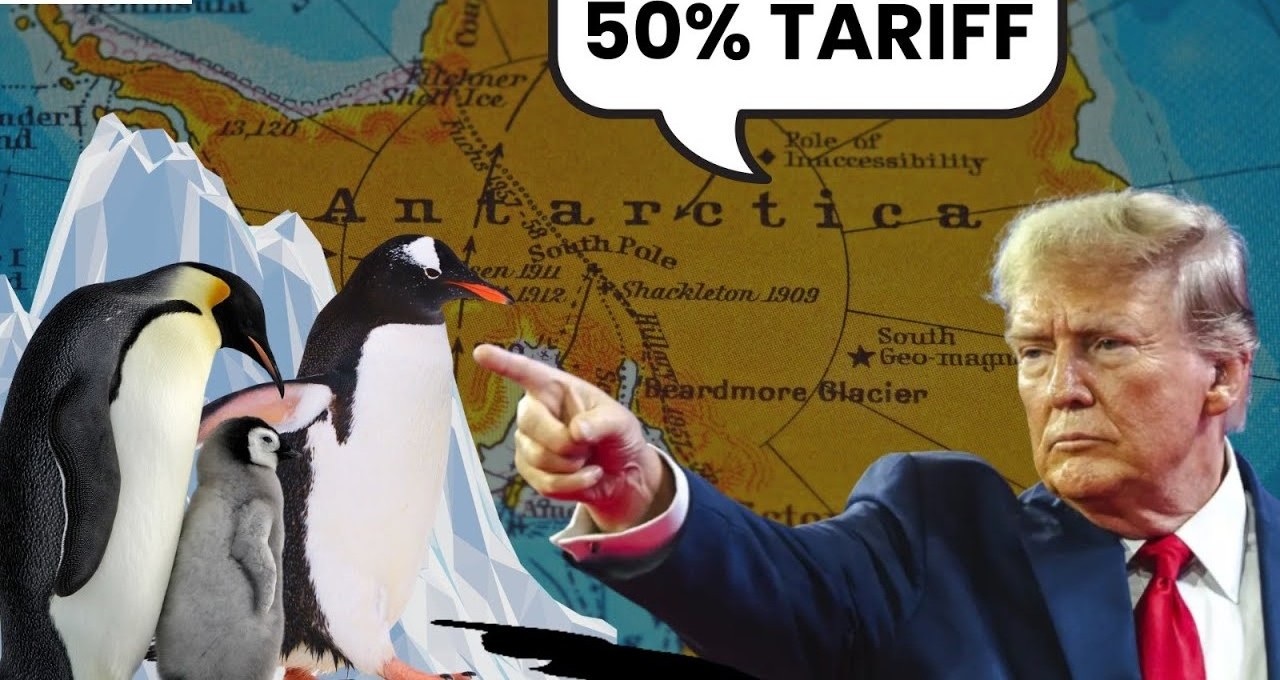- admin
- January 20th, 2025
- admin
- April 4th, 2025

Trump’s “Liberation Day” Tariffs: What It Means for India
On April 2, 2025, US President Trump declared “Liberation Day” —unleashing sweeping reciprocal tariffs on goods from over 180 countries, including 26-27% on India. He has even imposed tariffs on islands near Antarctica inhabited only by Penguins and no humans, but that's a different story. Has he unleashed a global trade war with one stroke of his pen? Will this lead to economic difficulties in India? Will the markets crash as a result? Should we stop our SIPs and liquidate all our investments? Read on to understand the situation better.
Immediate Ripples: The Short-Term Impact
Market Volatility: In the immediate aftermath, Indian stock markets are experiencing some jitters - which is as expected. But Indian markets have so far seen only modest dips compared to many other global stock markets.
Currency Movements: With increased uncertainty, the rupee might weaken a little. But here’s the silver lining—strong domestic fundamentals and timely RBI liquidity injections are helping keep things in check.
Sector-Specific Effects: Not all industries are hit equally. For example:
IT Services: Could suffer indirectly if a slowdown in the US leads to reduced outsourcing demand.
Pharmaceuticals: Largely exempt from tariffs for now, likely giving these companies a boost and helping maintain export revenue.
Textiles and Gems/Jewellery: These export-heavy sectors might see their competitive edge erode due to higher costs, likely affecting their margins.
The Bigger Picture: Long-Term Structural Shifts
Global Supply Chain Reconfiguration: One of the most significant second-order effects is how global companies may start shifting production away from heavily tariffed regions. India could emerge as a prime alternative if it steps up its infrastructure game and creates a more business-friendly environment. This shift might eventually boost manufacturing and exports.
Trade Negotiations and Reforms: The tariff shock is nudging India toward serious negotiations with the US. If the 1991 balance of payments crisis nudged us towards major economic reforms, this tariffs crisis might well turn out to be the trigger for accelerating long-pending trade reforms. A well-structured bilateral trade deal with the US could eventually lower the tariffs and address long-standing protectionist policies. This means:
For Exporters: Better market access and possibly reduced duty burdens.
For the Economy: An impetus to reform and modernize trade practices, which could improve long-term competitiveness.
Economic Growth and Inflation: Short-term, these tariffs might shave off about 0.3–0.5 percentage points from India’s GDP growth. But if the shock encourages India to push through necessary reforms—like boosting value addition in exports and reducing non-tariff barriers—the long-term outlook could be brighter. At the same time, persistent uncertainty could drive up costs and inflation, so policymakers will need to balance these challenges carefully.
Investor Sentiment and Market Repositioning: In the near term, investors might favor defensive sectors like FMCG and utilities over export-dependent industries. However, if India successfully navigates the trade negotiations and repositions itself as a manufacturing hub, sectors like pharma and auto components (which are already somewhat insulated) could see robust growth, supporting overall market recovery.
What Does It Mean for India?
In essence, while Trump’s tariffs are causing short-term pain—marked by market volatility, slight currency pressure, and sector-specific challenges—the silver lining is the potential for long-term gains. If India leverages these shocks to secure better trade deals and boost domestic manufacturing, it could emerge stronger, with a more diversified export base and increased global competitiveness.
What Does it mean for your investments? Our recommendations...
It is always tempting to listen to the latest bad news and react impulsively with your investments. But the rules of good investing are the same regardless. Be clear about your financial goals and your investment horizon. Plan for the long-term and do not invest in equity for short-term needs. For the long-term, stick to your planned asset allocation regardless of the macro-economic or geopolitical news. In 5-years, tariffs are unlikely to be the main news headlines. The world would have evolved and moved on. And most importantly, avoid impulsive trades, and be patient. The stock market is known to transfer wealth from the impatient to the patient, so keeping a check on your behavior is the most important thing you can do for your long-term wealth creation.
Still, keep an eye on these developments and remember: sometimes, what looks like a setback can also be a stepping stone to positive transformation.






